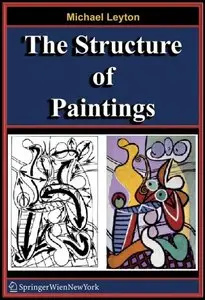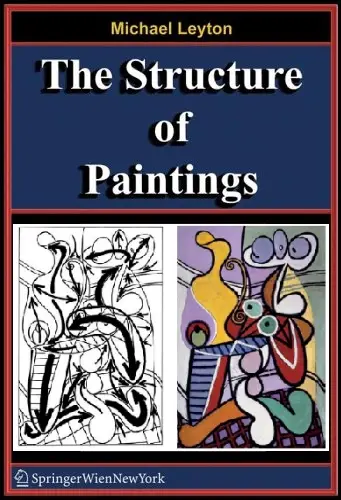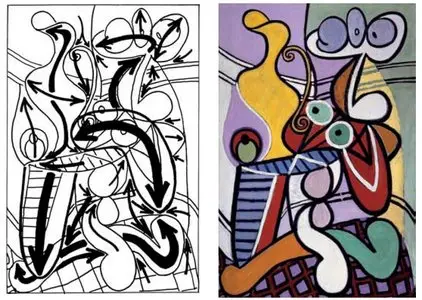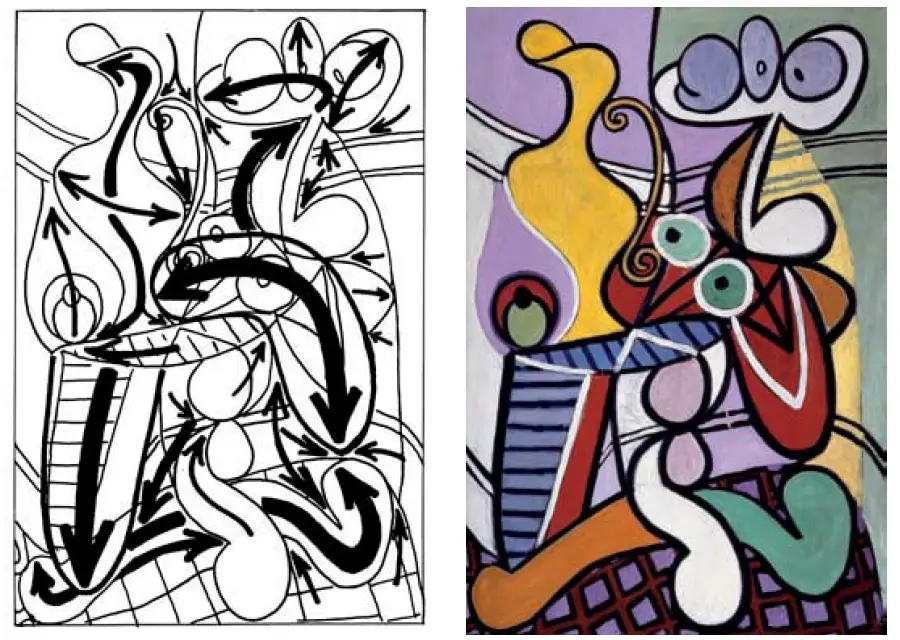"The Structure of Paintings" by Michael Leyton
Springer | 2006 | ISBN: 9783211357392 | 226 pages | PDF | 5 MB
Springer | 2006 | ISBN: 9783211357392 | 226 pages | PDF | 5 MB
The book apply new foundations to several disciplines: human and computer vision, robotics, software engineering, musical composition, architecture, painting, linguistics, mechanical engineering, computer-aided design and modern physics. This is the first book whose purpose is to give a systematic elaboration of the laws of artistic composition.
Michael Leyton has developed new foundations for geometry in which shape is equivalent to memory storage. A principal argument of these foundations is that artworks are maximal memory stores. The theory of geometry is developed from Leyton's fundamental laws of memory storage, and this book shows that these laws determine the structure of paintings. Furthermore, the book demonstrates that the emotion expressed by a painting is actually the memory extracted by the laws. Therefore, the laws of memory storage allow the systematic and rigorous mapping not only of the compositional structure of a painting, but also of its emotional expression. The argument is supported by detailed analyses of paintings by Picasso, Raphael, Cezanne, Gauguin, Modigliani, Ingres, De Kooning, Memling, Balthus and Holbein.
This is the first in a series of books whose purpose is to give a systematic elaboration of the laws of artistic composition. We shall see that these laws enable us to build up a complete understanding of any painting – both its structure and meaning. The reason why it is possible to build up such an understanding is as follows. In a series of books and papers, we developed new foundations to geometry – foundations that are very different from those that have been the basis of geometry for the last 3000 years.
The central proposal of this theory is:
SHAPE = MEMORY STORAGE.
SHAPE = MEMORY STORAGE.
That is: What we mean by shape is memory storage, and what we mean by memory storage is shape and we will see how these new foundations for geometry are directly the opposite of the foundations that have existed from Euclid to modern physics, including Einstein.
The books apply these new foundations to several disciplines: human and computer vision, robotics, software engineering, musical composition, architecture, painting, linguistics, mechanical engineering, computer-aided design and modern physics. The newfoundations unify these disciplines by showing that a result of these foundations is that geometry becomes equivalent to aesthetics. That is, the theory of aesthetics, given by the new foundations, unifies all scientific and artistic disciplines.
Contents
1 Shape as Memory Storage
1.1 Introduction
1.2 New Foundations to Geometry
1.3 TheWorld as Memory Storage
1.4 The Fundamental Laws
1.5 The Meaning of an Artwork
1.6 Tension
1.7 Tension in Curvature
1.8 Curvature Extrema
1.9 Symmetry in Complex Shape
1.10 Symmetry-Curvature Duality
1.11 Curvature Extrema and the Symmetry Principle
1.12 Curvature Extrema and the Asymmetry Principle
1.13 General Shapes
1.14 The Three Rules
1.15 Process Diagrams
1.16 Trying out the Rules
1.17 How the Rules Conform to the Procedure for Recovering the Past
1.18 Applying the Rules to Artworks
1.19 Case Studies
1.19.1 Picasso: Large Still-Life with a Pedestal Table
1.19.2 Raphael: Alba Madonna
1.19.3 C´ezanne: Italian Girl Resting on Her Elbow
1.19.4 de Kooning: Black Painting
1.19.5 Henry Moore: Three Piece #3, Vertebrae
1.20 The Fundamental Laws of Art
2 Expressiveness of Line
2.1 Theory of Emotional Expression
2.2 Expressiveness of Line
2.3 The Four Types of Curvature Extrema
2.4 Process-Arrows for the Four Extrema
2.5 Historical Characteristics of Extrema
2.6 The Role of the Historical Characteristics
2.7 The Duality Operator
2.8 Picasso: Woman Ironing
3 The Evolution Laws
3.1 Introduction
3.2 Process Continuations
3.3 Continuation at M+ and m-
3.4 Continuation at m+
3.5 Continuation at M-
3.6 Bifurcations
3.7 Bifurcation at M+
3.8 Bifurcation at m-
3.9 The Bifurcation Format
3.10 Bifurcation at m+
3.11 Bifurcation at M-
3.12 The Process-Grammar
3.13 The Duality Operator and the Process-Grammar
3.14 Holbein: Anne of Cleves
3.15 The Entire History
3.16 History on the Full Closed Shape
3.17 Gauguin: Vision after the Sermon
3.18 Memling: Portrait of a Man
3.19 Tension and Expression
4 Smoothness-Breaking
4.1 Introduction
4.2 The Smoothness-Breaking Operation
4.3 Cusp-Formation
4.4 Always the Asymmetry Principle
4.5 Cusp-Formation in Compressive Extrema
4.6 The Bent Cusp
4.7 Picasso: Demoiselles d’Avignon
4.8 The Meaning of Demoiselles d’Avignon
4.9 Balthus: Thérèse
4.10 Balthus: Thérèse Dreaming
4.11 Ingres: Princesse de Broglie
4.12 Modigliani: Jeanne Hébuterne
4.13 The Complete Set of Extrema-Based Rules
4.14 Final Comments
Attach.: Color Plates
Plate 1 Picasso: Large Still-Life with a Pedestal Table
Plate 2 Raphael: Alba Madonna
Plate 3 Cezanne: Young Italian Woman at a Table or Italian Girl Resting on Her Elbow
Plate 4 de Kooning: Black Painting
Plate 5 Picasso: Woman Ironing
Plate 6 Holbein: Anne of Cleves
Plate 7 Gauguin: The Vision after the Sermon
Plate 8 Memling: Portrait of a Man
Plate 9 Picasso: Les Demoiselles d‘Avignon
Plate 10 Balthus: Therese
Plate 11 Balthus: Therese Dreaming
Plate 12 Ingres: Princesse de Broglie
Plate 13 Modigliani: Jeanne Hebuterne
with TOC BookMarkLinks
reloaded 23/07/2010





